Kyoto, a premier tourist destination in Japan, especially gets crowded during the autumn foliage season.
Among the many popular autumn foliage spots in Kyoto, one standout location is Rurikō-in Temple.
The spectacular autumn colors seen from the traditional sukiya-style architecture are truly a breathtaking sight.
The photos of maple reflections on the table are especially famous and often discussed on social media.
In mid-November, already deep into the autumn foliage season, I decided on a whim to visit Rurikō-in.
Despite the reservation slots being mostly filled, I managed to secure a booking for the slightly less crowded November 30th, thanks to the current circumstances.
The entry fee of 2,000 yen seemed a bit high for a temple(in 2022), but by the time I left Rurikō-in, I was filled with satisfaction.
It’s great that reservations are required nowadays, so there’s no need to wait in long lines, making it a place I truly enjoyed visiting!
- Access and Transportation to Rurikō-in
- Reservations Required During Autumn Foliage Season at Rurikō-in, Admission Fee is 2,000 Yen
- From Yase-Hieizanguchi Station to Rurikō-in. Picturesque Scenery Along the Way
- The Breathtaking Beauty of the Garden and the Reflections on the Table
- More than Just the Reflections on the Table: A Host of Attractions
Access and Transportation to Rurikō-in
To get to Rurikō-in by public transport, the Eizan Electric Railway’s Yase-Hieizanguchi Station or the Kyoto Bus Yase Station are convenient.
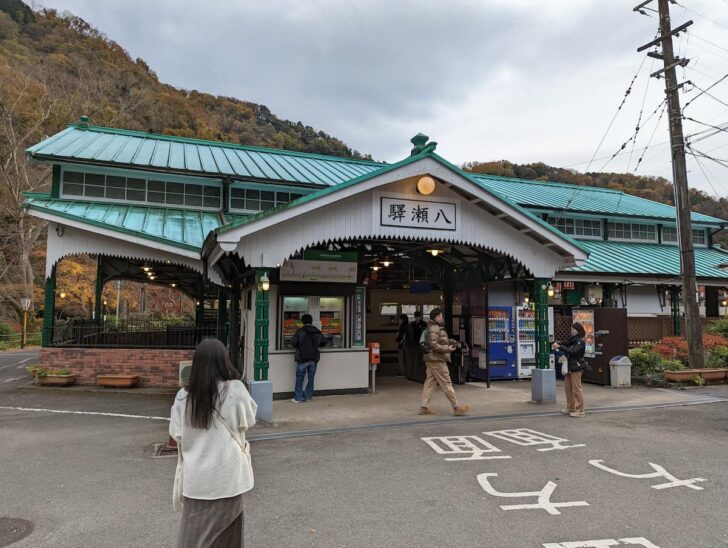
Although the Hieizan Cable’s Yase Station is nearby, it leads to the summit of Mount Hiei and is unlikely used when accessing from the city.
Having had a bad experience with Kyoto’s buses, I personally avoided them and opted for the train instead.
From Kyoto Station, for example, you can take the JR Nara Line to Tofukuji Station, then switch to the Keihan Main Line to Demachiyanagi Station.
From there, take the Eizan Electric Railway to its terminus at Yase-Hieizanguchi Station.
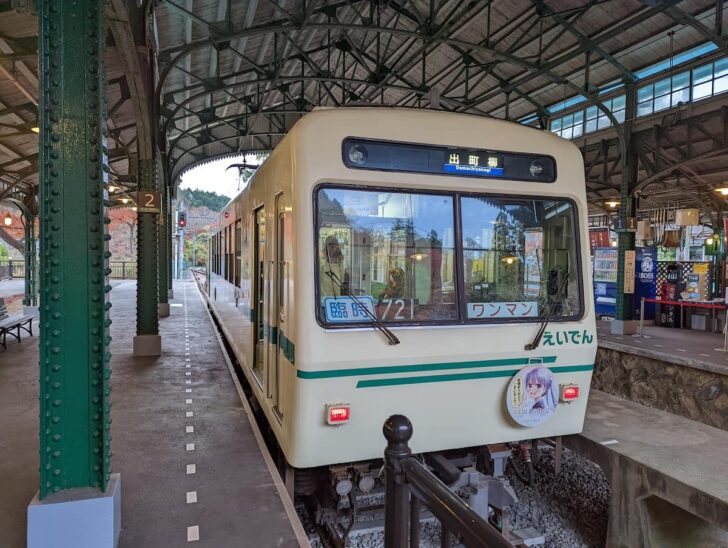
There seems to be no nearby parking, so if accessing by car, the official website recommends using the “Kyoto City Demachi Parking Lot.”
From there, take the Eizan Electric Railway from Demachiyanagi Station to Yase-Hieizanguchi Station.
Reservations Required During Autumn Foliage Season at Rurikō-in, Admission Fee is 2,000 Yen
Entry to Rurikō-in is only possible during the special viewing periods in spring (April to June) and autumn (October to December).
While spring is relatively uncrowded and doesn’t require reservations, you must book in advance through the official website during the autumn foliage season.
The admission fee is 2,000 yen for all seasons. It’s somewhat pricey, so please check in advance if you are okay with the cost.
From Yase-Hieizanguchi Station to Rurikō-in. Picturesque Scenery Along the Way
After taking JR → Keihan → Eizan Electric Railway, you arrive at Yase-Hieizanguchi Station.
Exiting the station, you cross the wooden bridge right in front of you, turn right, and head to Rurikō-in.
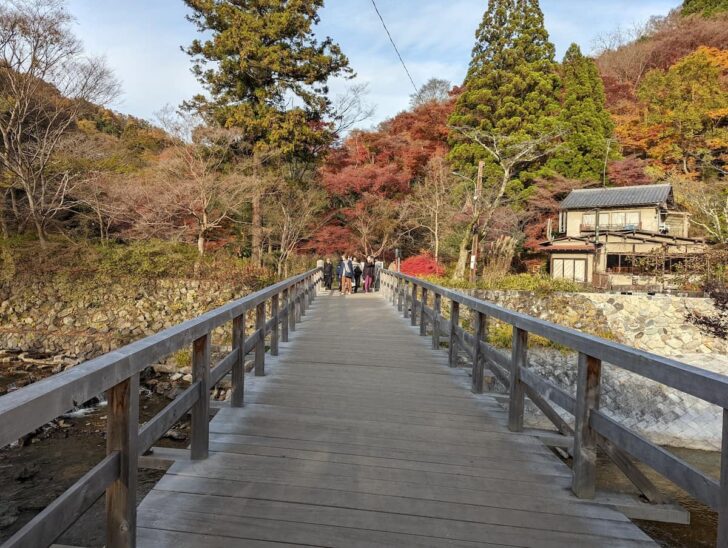
Though past the peak of autumn foliage, there were still vibrant red maples along the way.
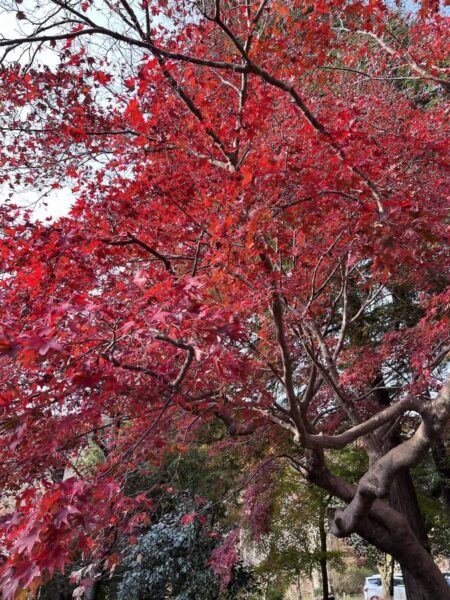
At the entrance of Rurikō-in, there were lanes for the queue, but it seemed people were entering smoothly that day.
At the reception, confirm your reservation and pay the admission fee of 2,000 yen per person to enter.

Despite the limited number due to the reservation system, the place was quite crowded.

The path to the building also offers plenty of beautiful scenery for photography.
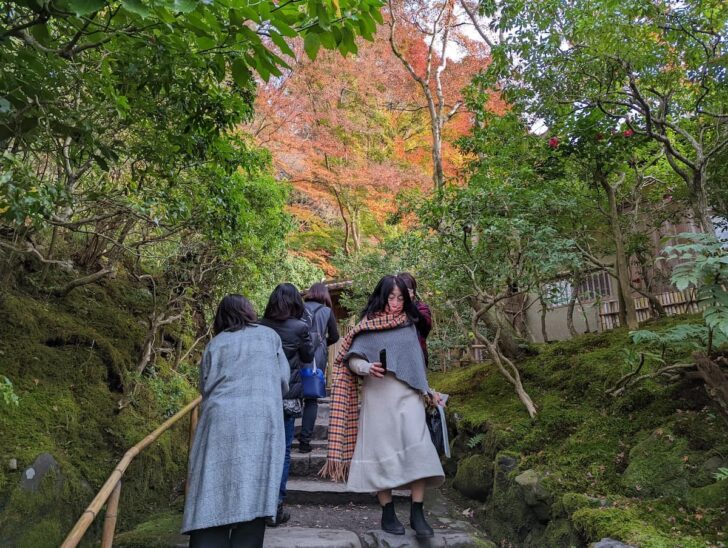
Halfway, I encountered a gate and thought it was the entrance, but it was actually the exit.
Let’s continue up further.
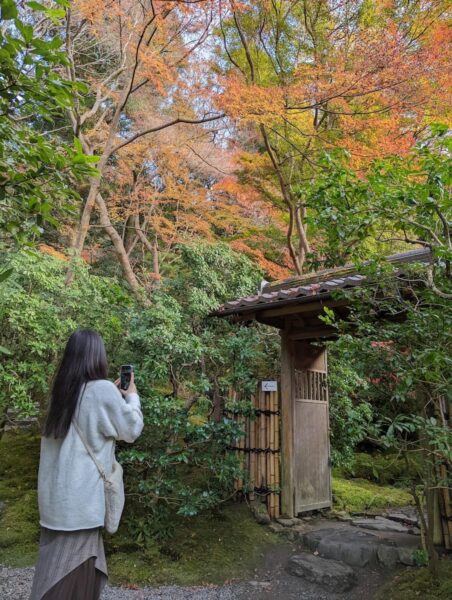
A single maple leaf fallen on the moss.
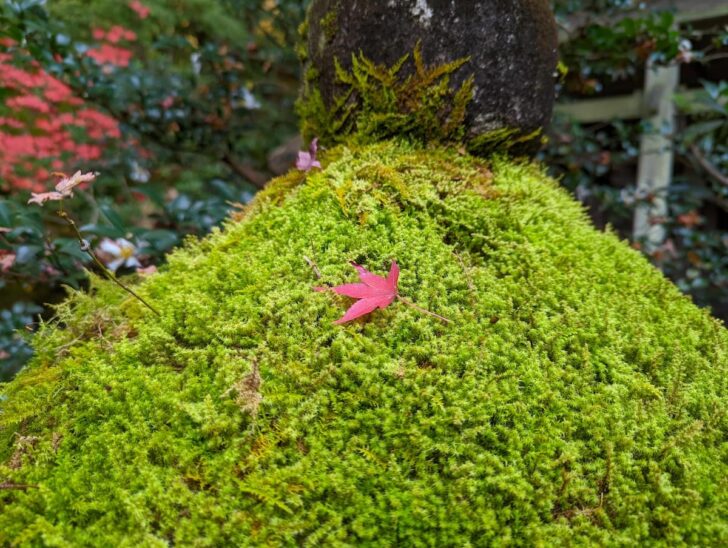
Apparently, this is the entrance to the building.
With the maple colors deepening, many groups started taking commemorative photos.
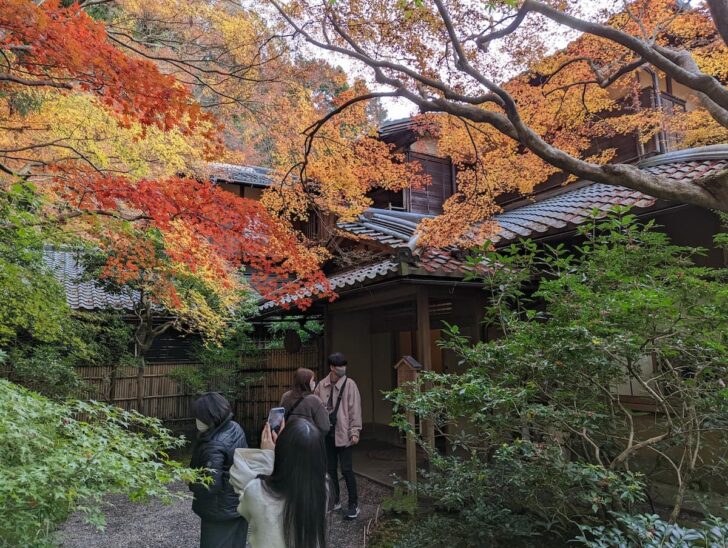
Leave your shoes at the entrance in the provided bags and enter.

Upon ascending the stairs, there was already a crowd. Perhaps the climax is right at the start?

The Breathtaking Beauty of the Garden and the Reflections on the Table
As expected! I immediately reached “the spot” upon entering the building.
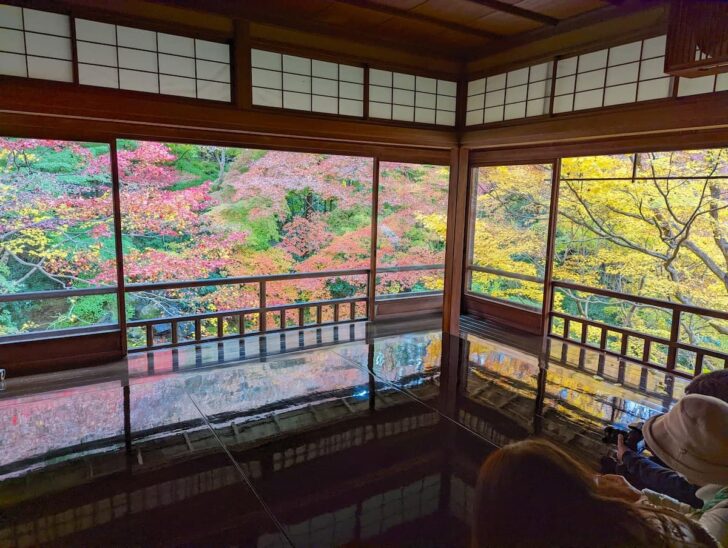
Wait patiently in line for your turn to take photos.
When it’s your turn, try to take your photos as quickly as possible.
The scenery of the garden and the glossy table reflecting it. Anyone can capture a beautiful photo by including both elements in the frame.
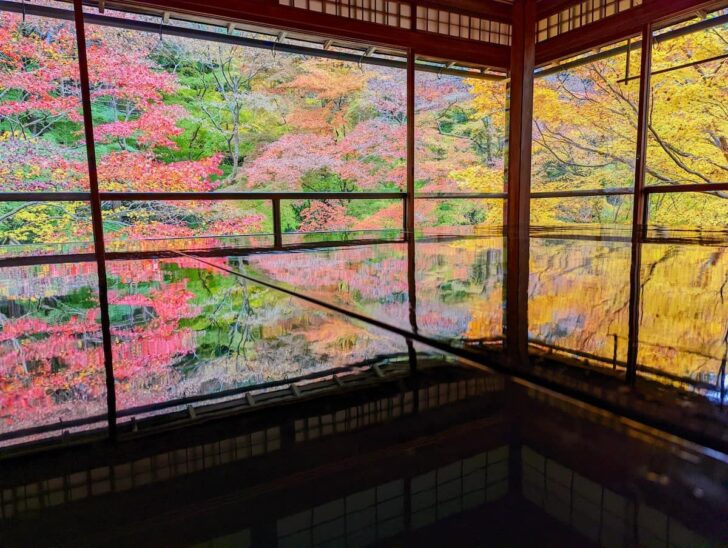
The peak has slightly passed, so there are fewer red leaves, but it’s still quite beautiful.
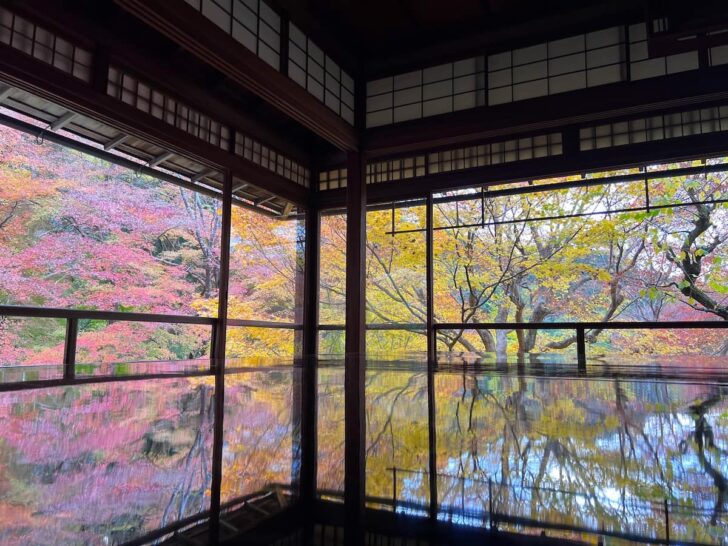
There are actually a lot of people taking photos around me, but they don’t appear in the picture.
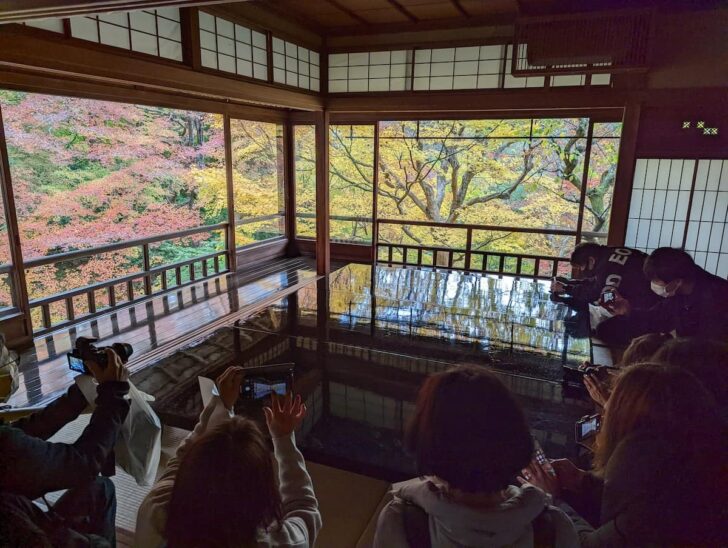
Regrettably, after taking enough photos, move on to the next spot.
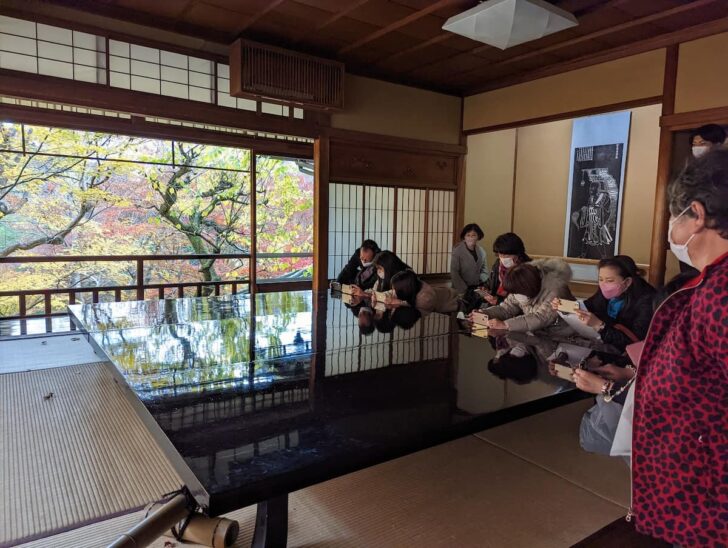
More than Just the Reflections on the Table: A Host of Attractions
While the spot with the reflections on the table is the most famous, Rurikō-in is not just about that. You can enjoy the garden from various angles.
If you thought there was a sauna here from the time of the Jinshin War…

A spot on the ground floor from where you can enjoy the garden.
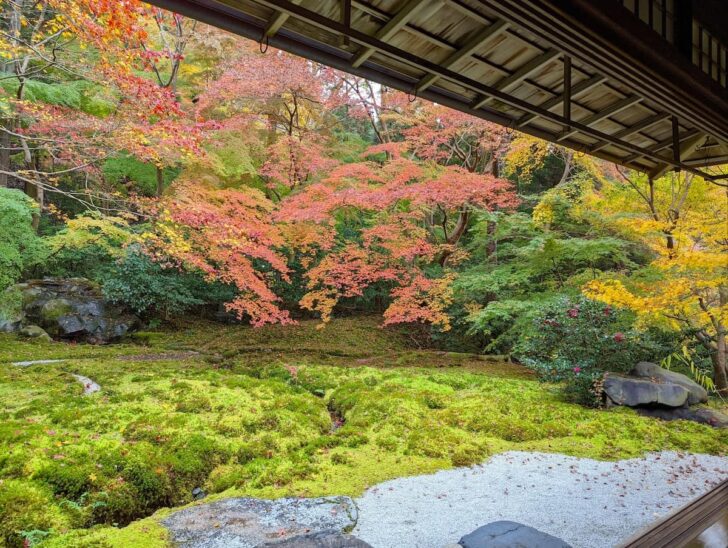
This spot also had many photographers. Despite the current times, there were quite a few visitors from abroad.
It’s indeed a popular spot for experiencing Japanese culture.
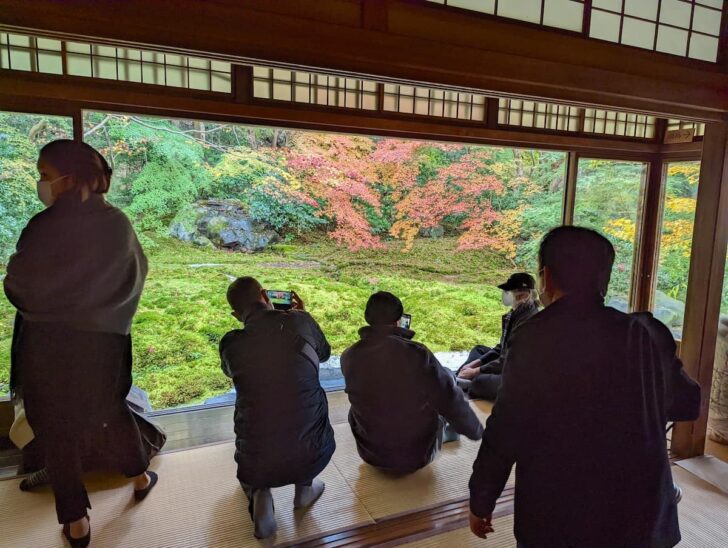
There are many other rooms with views of the garden, windows where you can see beautiful autumn leaves, and many attractions inside the building.
I only knew about the spot with the reflective table, but the interior is quite spacious.

Enjoy the autumn garden in shades of red, yellow, orange, and green.
I was initially taken aback by the admission fee of 2,000 yen, but it was indeed a worthwhile experience.
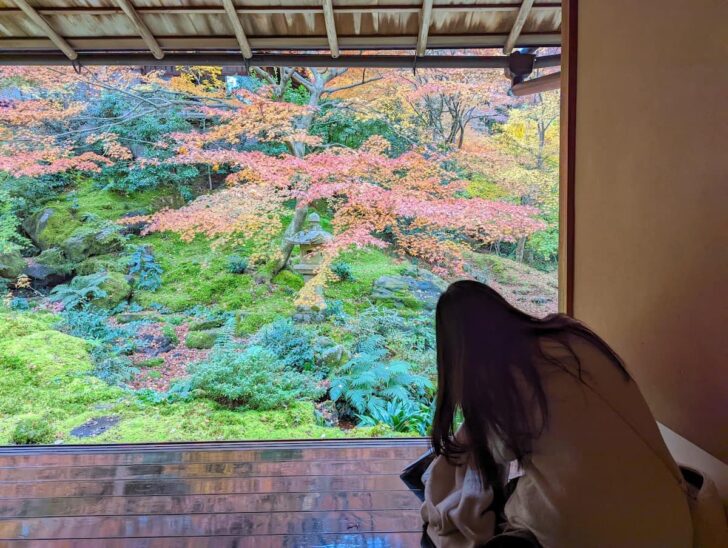
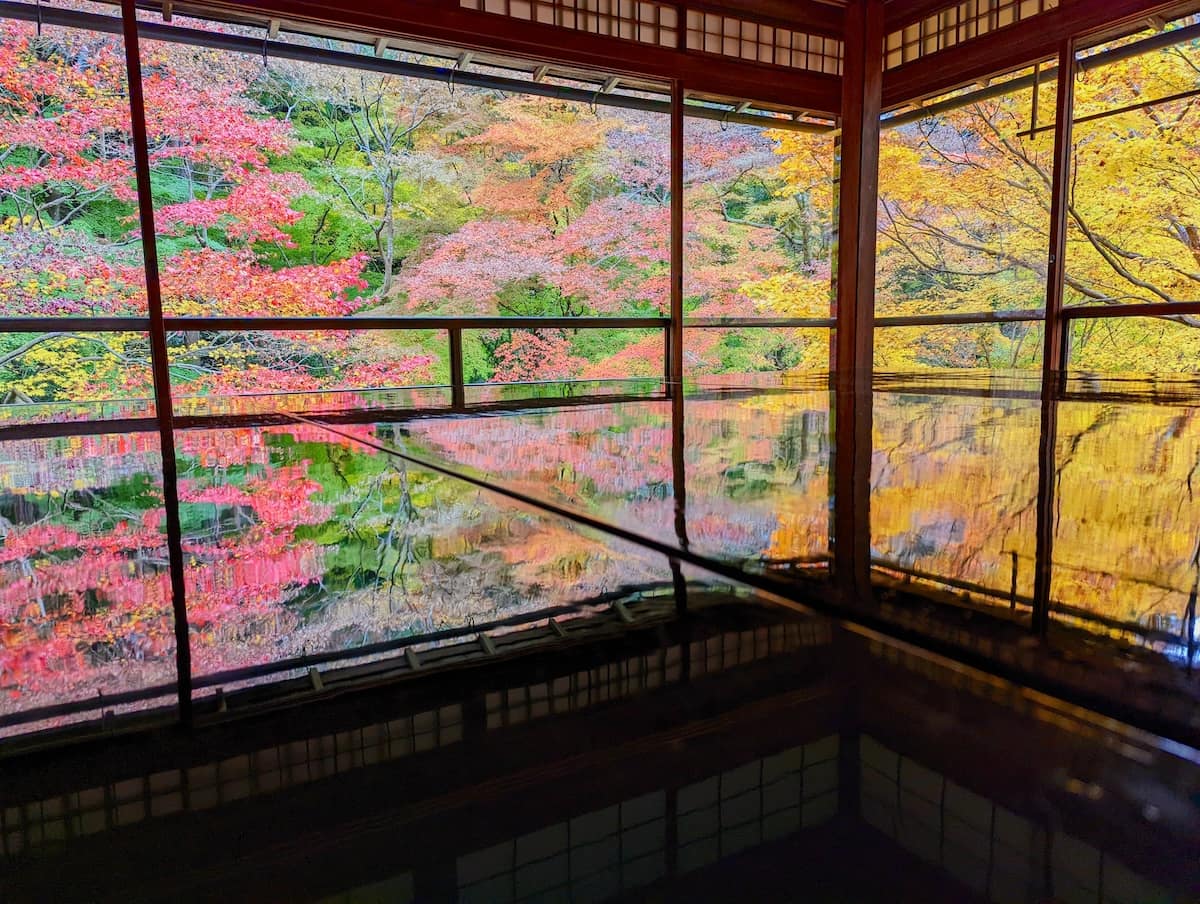
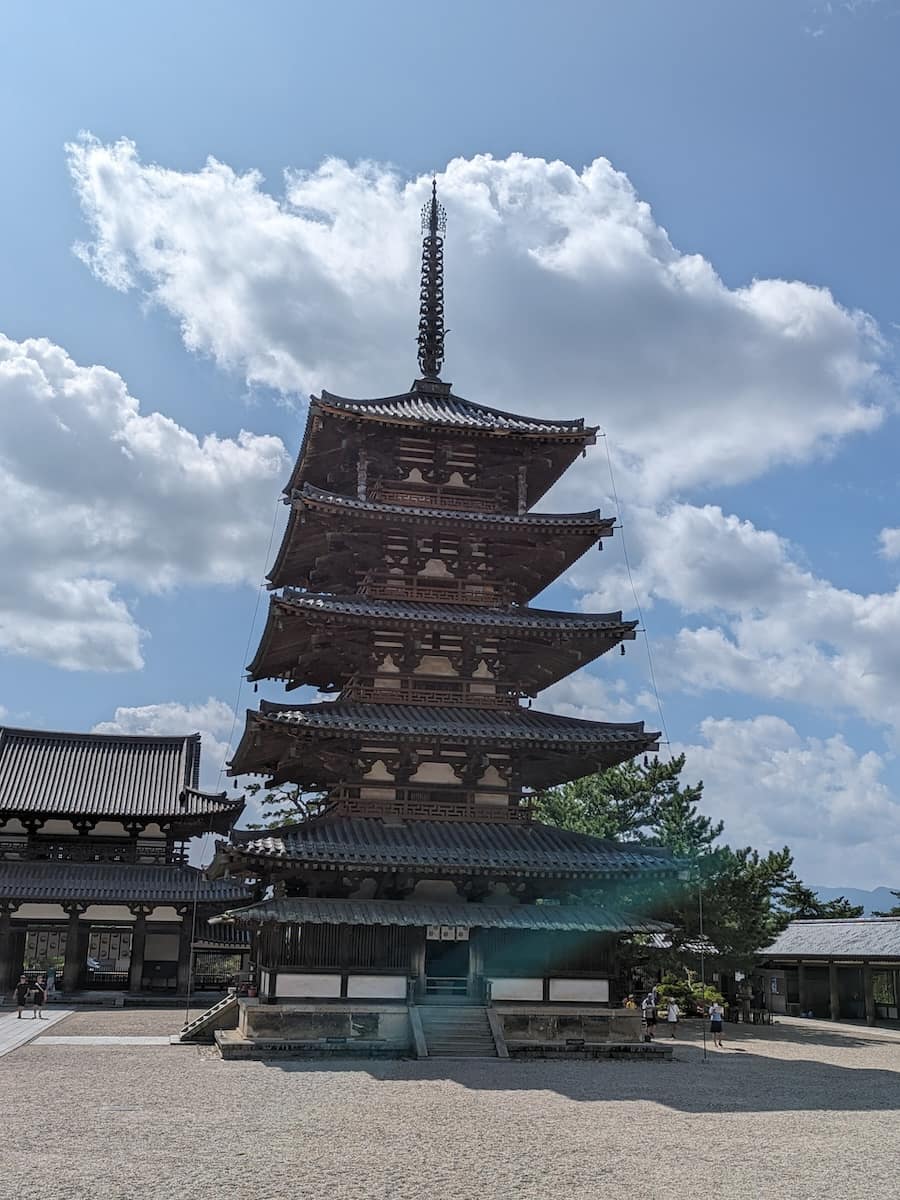
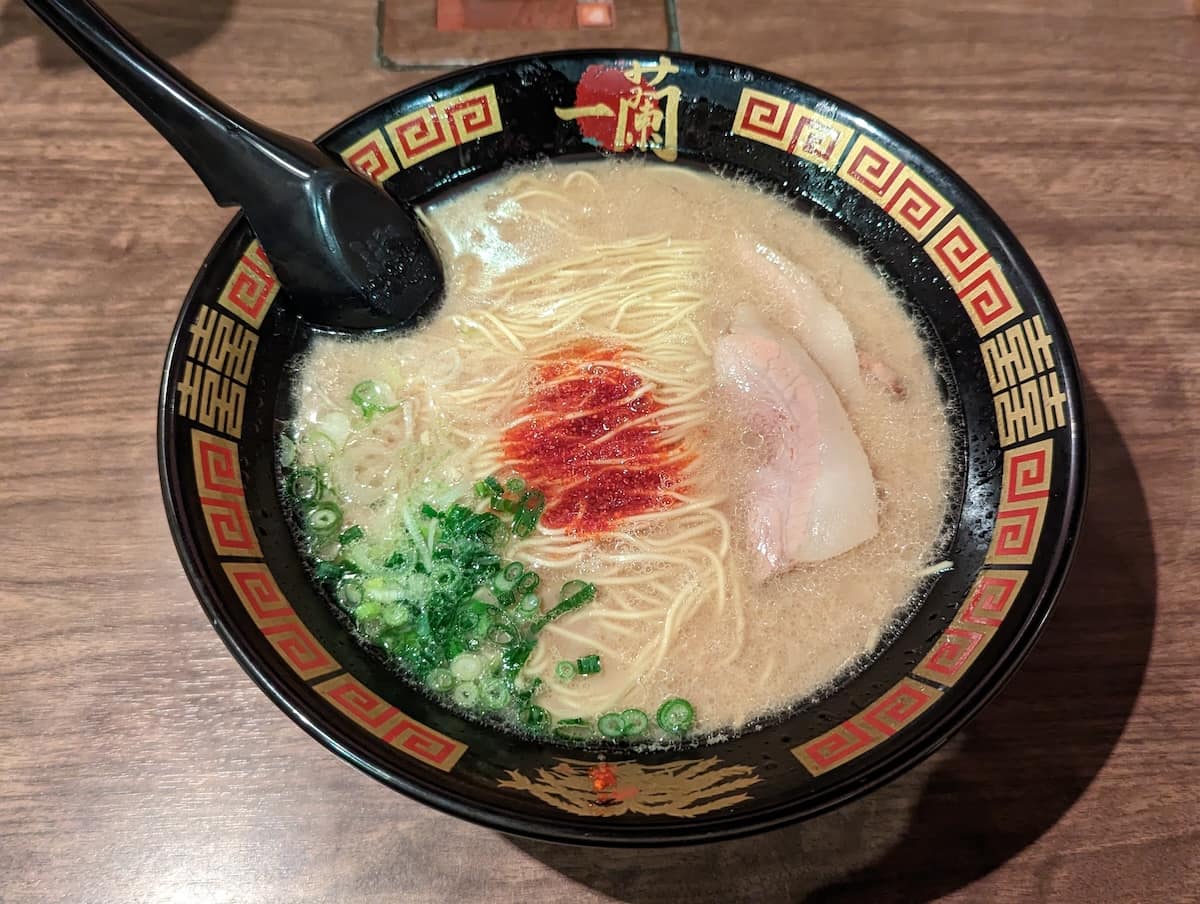
Comments